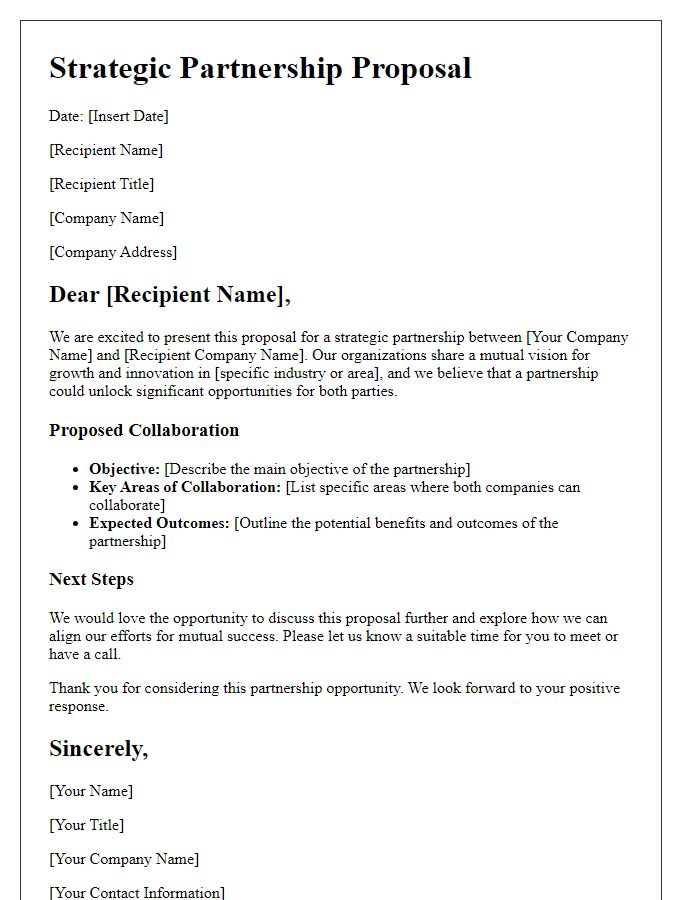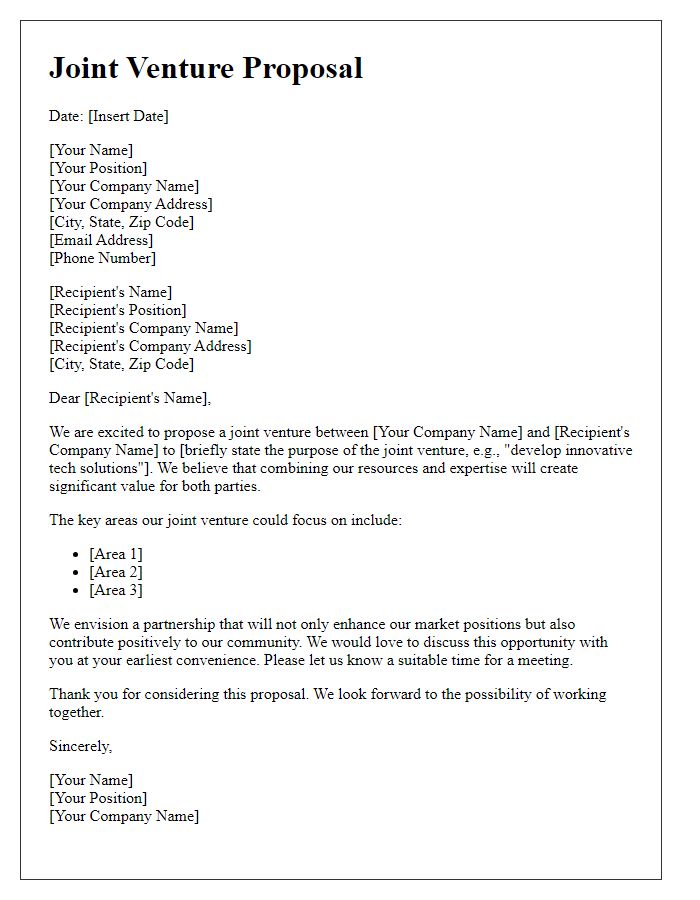Are you looking to establish a mutually beneficial partnership that could elevate your business to new heights? A well-crafted partnership proposal letter can serve as an impressive introduction and set the tone for collaboration. In this article, we'll dive into the essential elements that make up an effective letter template for key partnership proposals, ensuring you capture attention and convey your vision clearly. So, let's explore the tips and tricks that could help you secure that game-changing partnership!

Objective and Vision Alignment
In a strategic partnership, aligning objectives and vision is crucial for synergy and mutual benefit. Organizations, such as nonprofits focused on environmental sustainability or tech startups innovating in renewable energy, benefit from clearly defined mutual goals. For instance, a nonprofit aiming to reduce plastic waste may align with a tech startup developing biodegradable alternatives, enabling joint efforts in awareness campaigns and product development. Such collaborations often involve measurable outcomes, like reducing plastic usage by 30% within two years, fostering a shared commitment to environmental stewardship. Establishing clear communication channels and regular meetings ensures that both parties remain focused on their shared vision and objectives, paving the way for successful collaboration and impactful results in their respective fields.
Value Proposition and Benefits
The strategic partnership between Company A and Company B presents a unique value proposition that leverages complementary strengths to enhance market presence. Company A specializes in innovative technology solutions, with a proven track record of achieving a 35% increase in efficiency for clients in the healthcare sector. Company B, with its extensive distribution network in North America and Europe, reaches over 1 million active customers. This collaboration will drive mutual growth by offering bundled services that cater to emerging needs, such as data security and user-friendly applications. By aligning resources, both companies can anticipate a projected revenue increase of 25% within the first year, while also bolstering brand loyalty through enhanced customer experiences and support. The shared commitment to sustainability and community engagement further amplifies the appeal of this partnership, positioning both companies as leaders in corporate responsibility and innovation within their respective industries.
Partnership Structure and Roles
A strategic partnership structure between companies, such as a joint venture between tech firms, outlines the roles and responsibilities essential for operational success. The primary partner assumes leadership in project management, with a defined position of Chief Operations Officer, overseeing the execution of objectives. Secondary partners contribute specialized expertise, like marketing insights or technical support, enhancing the overall effectiveness of the collaboration. Clear communication channels between stakeholders, including weekly update meetings, facilitate transparency and problem-solving. Additionally, resource allocation, such as funding distribution or shared technology platforms, must be clearly documented to prevent misunderstandings. Establishing performance metrics, for example, quarterly reviews of project milestones, ensures alignment with overarching goals and accountability among all parties involved in the partnership.
Communication and Collaboration Plan
A comprehensive Communication and Collaboration Plan establishes the foundation for a successful partnership between organizations. Regular meetings should be scheduled weekly, including representatives from both parties, to discuss progress and challenges. Tools such as Slack, Microsoft Teams, and Asana can facilitate real-time communication and project management. Setting clear expectations for response times (e.g., within 24 hours for emails) ensures accountability. Annual review sessions offer an opportunity to evaluate outcomes against agreed objectives, fostering continuous improvement. Specific milestones should be tracked monthly, aiming for tangible results such as increased engagement (by 30% within the first quarter) or expanded outreach efforts to at least 5,000 new subscribers within six months. The plan should emphasize transparency, with shared access to all relevant documentation and data, ensuring both teams remain informed and aligned.
Call to Action and Next Steps
Creating a strategic alliance can lead to significant mutual benefits, particularly in leveraging combined resources to enhance market reach and operational efficiency. Engaging with potential partners requires clarity on intended outcomes and a well-defined plan for collaboration. Initial discussions can outline shared goals, identifying specific areas for synergy, such as product development, marketing campaigns, or technological integration. Following these discussions, it is crucial to establish a timeline for action steps, detailing responsibilities and measurable milestones to track progress. Setting up a dedicated team for ongoing communication can facilitate transparency and allow for adjustments based on evolving needs or market conditions. Ultimately, a clear call to action, emphasizing the urgency and potential impact of the partnership, can be instrumental in securing commitment and moving forward with confidence.













Comments